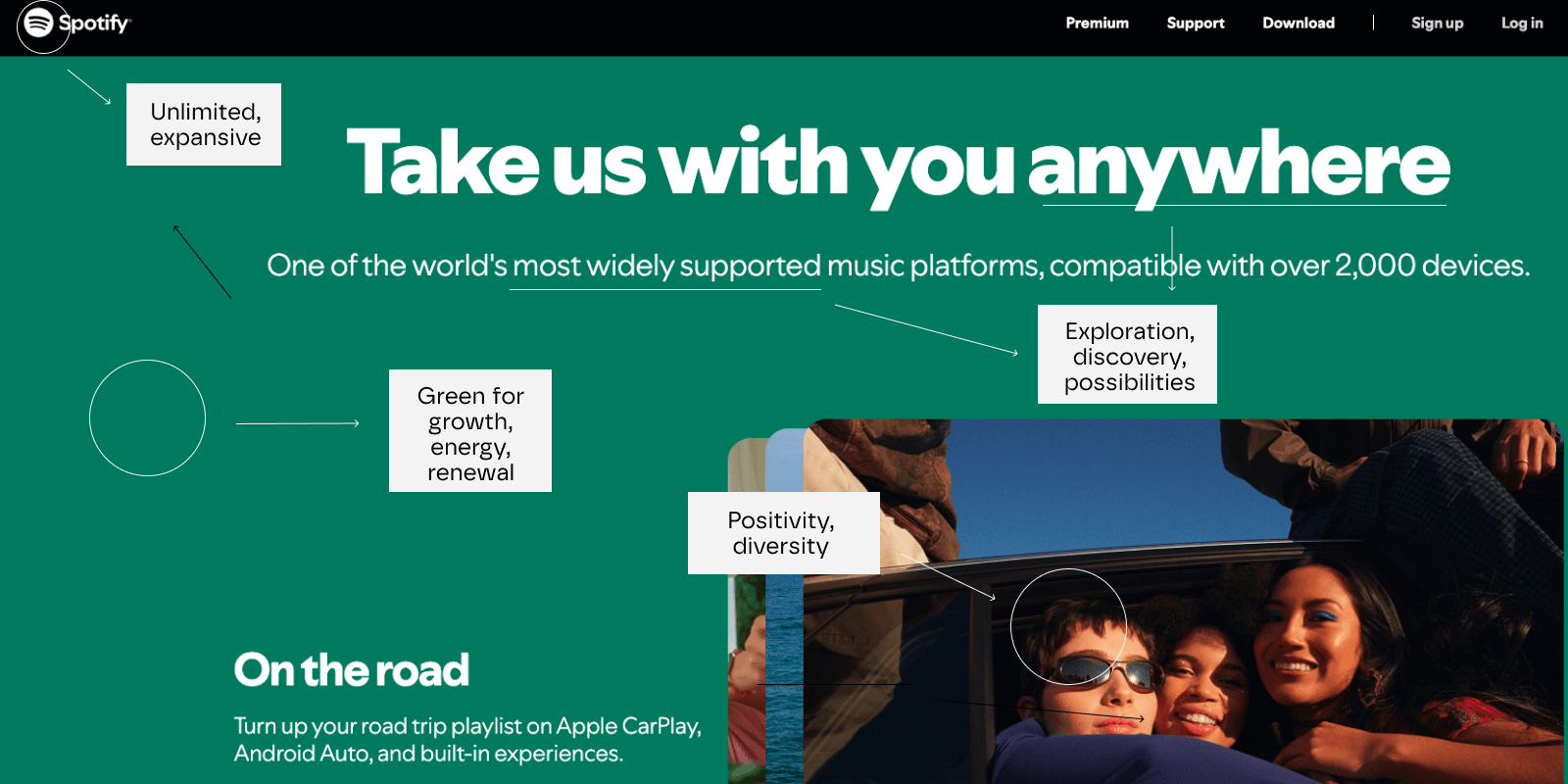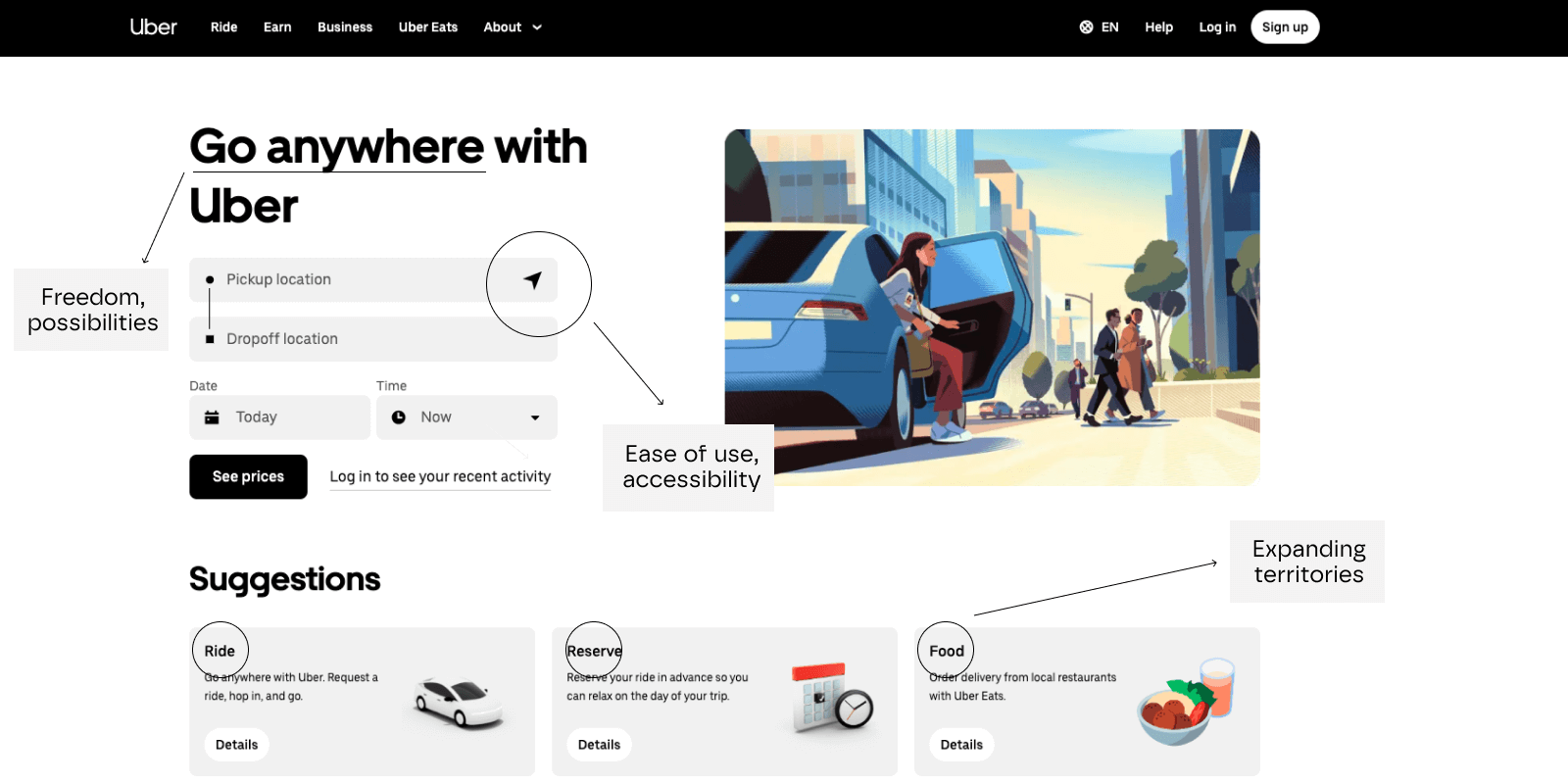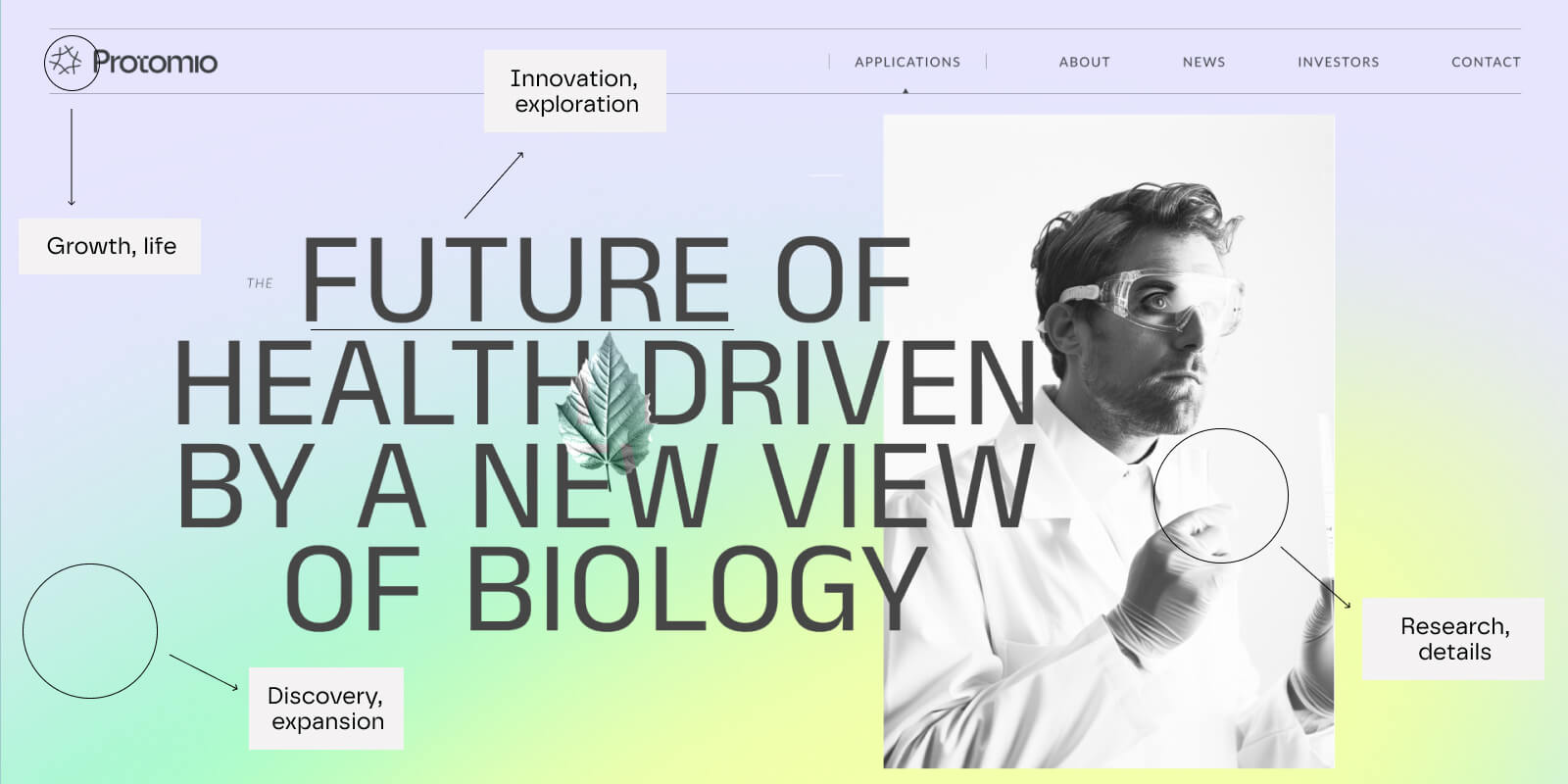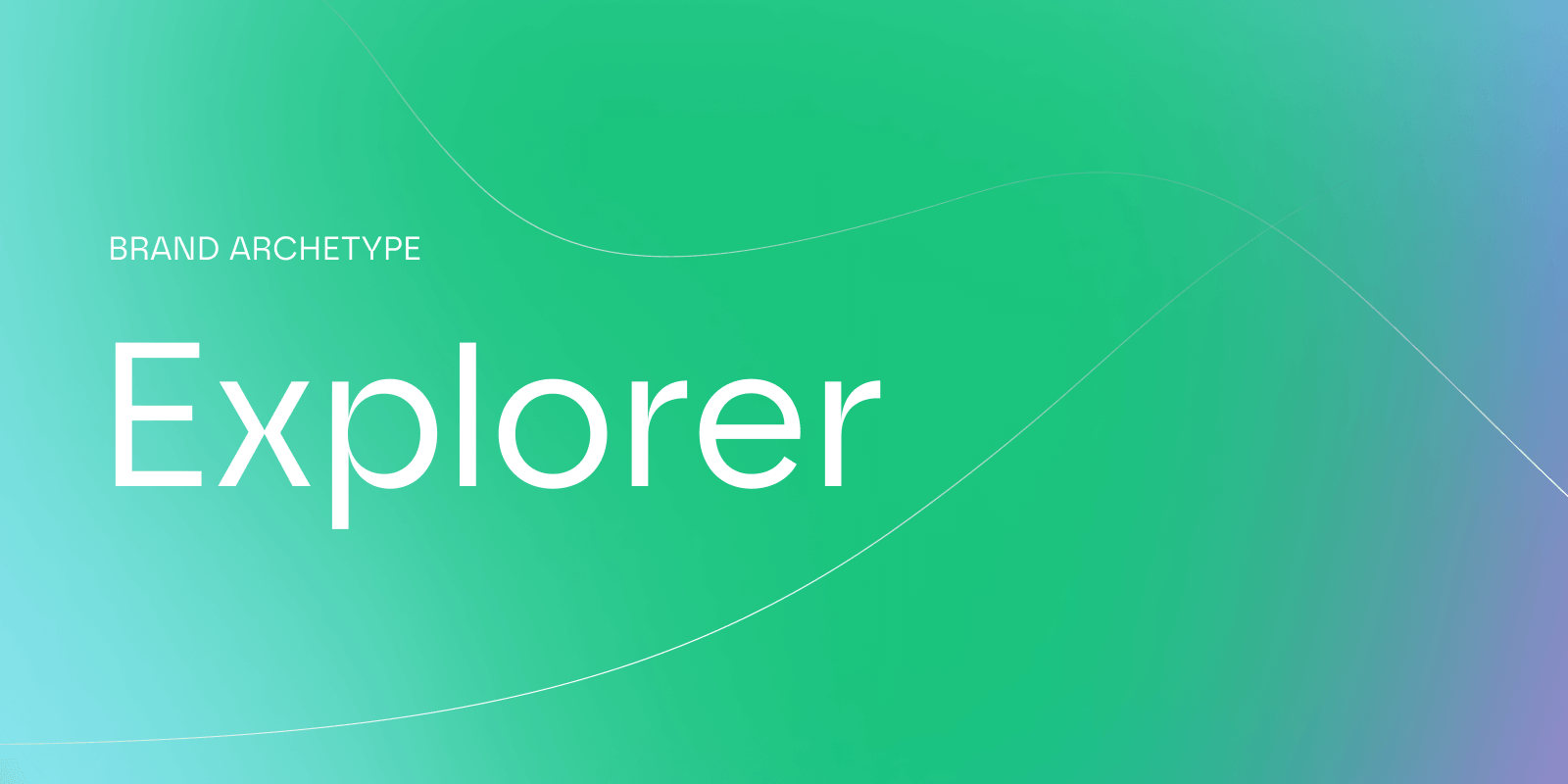No, it’s not only North Face, Jeep, or other product-focused brands that can be explorers. Innovation-driven startups in the tech sector can also identify themselves with this brand archetype.
This brand personality thrives on discovery, curiosity, and pushing boundaries: qualities that align naturally with tech companies aiming to disrupt industries and open new possibilities.
Explorer brands position themselves as pioneers leading customers into uncharted territory and discovering new possibilities. When executed authentically, this archetype helps startups inspire loyalty, differentiate in crowded markets, and lead with innovation rather than imitation.
TL;DR?
Explorer brands lead with curiosity, independence, and originality. For tech startups, becoming an Explorer brand means moving beyond product features and pricing to position themselves as pioneers opening new possibilities. The foundation is a clear brand strategy for startups—defining mission, values, and identity—so the Explorer archetype can guide consistent branding, communication, and customer experience. To become a real Explorer, focus on storytelling, transformation, and empowerment. Use language that invites your audience on a journey or challenges them to break free and explore.
What is an Explorer brand?
What makes an Explorer brand different?
Explorer brand example 1: Spotify
Explorer brand example 2: Causaly
Explorer brand example 3: Uber
Explorer brand example 4: Protomio
Is my startup an Explorer brand?
How does my startup become an Explorer brand?
What is an Explorer Brand?
Explorer brands are companies that represent curiosity, authenticity, and the courage to venture beyond conventional boundaries. They connect with users’ deeper motivations for exploration and discovery.
Explorer brands inspire customers to expand horizons, embrace novelty, and seek new experiences. They position every interaction as an invitation to discover something previously unknown.
The most successful hero brands in tech combine three essential characteristics:
Discovery-oriented positioning: Explorer tech startups position themselves as pioneers or guides. Instead of presenting their offerings as static solutions, they frame them as invitations to discover new opportunities. Brand stories often highlight journeys, experiments, and open horizons rather than end results.
Vivid branding: Visual identity and storytelling evoke the idea of discovery, exploration, or research. Colors tend to lean toward natural, bold, or unexpected palettes that stand out. Expanding shapes indicate new paths and endless possibilities, ultimately signifying growth and life.
Freedom-focused messaging: The tone of voice emphasizes independence, adventure, and liberation from constraints. Messaging frames products as enablers of autonomy, highlighting how users can break away from limitations and chart their own path.
What makes an Explorer brand different?
The Explorer mindset
Explorer brands emphasize curiosity and freedom. Rather than positioning themselves as champions, they act as pioneers who help customers discover new territories of possibility. This mindset is based on the following core elements:
Innovation: Explorer brands have a clear brand promise, namely that of continuous innovation. This goes hand in hand with launching new features, products, and services.
Partnership: They actively seek collaborations to expand their reach and enhance what they can offer, reinforcing their role as enablers of exploration. Explorer brands create partnership dynamics where the company and customer (or partner) embark on journeys of discovery together.
Originality: Explorer brands stand out by staying true to their own path. They avoid imitation and instead focus on creating distinct, pioneering expressions of their mission and values.
Explorer vs. Hero communication styles
The messaging difference is subtle but significant:
- Hero brands: "We'll help you conquer your challenges"
- Explorer brands: "We'll help you discover what's possible"
Explorer Brand Examples in Tech
The following tech companies from the Leisure and Biotech sector demonstrate how the Explorer archetype translates into successful brand strategies.
Spotify: Personal music discovery journeys

Spotify’s branding consistently frames music as a world to be explored rather than consumed. Features like "Discover Weekly" and "Release Radar" encourage users to explore music as an ongoing adventure. Campaigns like “Wrapped” reframe passive listening into a personal expedition, celebrating how users explore culture and identity through music.
How does Spotify’s branding reflect the Explorer archetype?
Logo: Spotify’s sound wave icon (three curved lines within the green circle) symbolizes streaming, and continuous, unlimited access to music. It also creates the idea of expansion. Simple yet powerful, it reinforces Spotify’s core brand story of discovery and connection through sound.
Visual identity: Green symbolizes growth, energy, and renewal, reflecting the constant flow of new music and content on the platform. It also conveys balance and well-being, aligning with Spotify’s promise of delivering a personalized listening experience for each user. Users are placed in the centre of the imagery, with happy-looking people reflecting positivity, diversity, and good vibes.
Verbal identity: A conversational tone reinforces openness, curiosity, and individuality. Headings like “Take us with you anywhere” and “Music that never stops”, the Leisure tech company indicates discovery, exploration, and endless music possibilities.
Causaly: Unlocking R&D progress

Causaly is a London-based Healthtech startup that integrates Gen-AI in life sciences. They are pursuing a paradigm shift in the development of new medicines. Helping users to discover hidden links faster, more efficiently, and with a more complete outcome, they’re unlocking R&D productivity. Causaly is about equipping users to discover and interpret knowledge—an authentic expression of Explorer motivations: curiosity, autonomy, and discovery.
How does Causaly’s branding reflect the Explorer archetype?
Logo: The isotype symbolizes two DNA helices expanding outward, enhancing the focus on biotechnology and data. The expansive shape suggests exploration and discovery.
Colors: The health tech startup’s color palette spans from vibrant Neuro Blue to deep Navy Blue and muted Dark Steel, creating a visual progression from depth of knowledge to clarity and analysis. An accent of Crimson Orange introduces energy, symbolizing discovery and momentum. The interplay between the calm blue tones and the vivid accent reinforces the idea of cause and effect: measured scientific exploration leading to impactful insights.
Imagery: The brand shapes made out of dots and lines represent the interconnection of data that underpins the Causaly platform. Abstract shapes in the background visuals resemble a microscopic view, indicating discovery and research. Despite operating in data-intensive life sciences, Causaly integrates people photography in communications, softening the technical narrative and creating a sense of companionship and relatability: a core Explorer trait (guiding others on a journey rather than merely presenting solutions).
Tone of voice: Causaly’s language hints at innovation and exploration. The slogan “The most complete AI platform for life sciences” and wordings like “Empower R&D teams to find, interpret, and share biomedical information” connects strongly with the Explorer archetype, hinting at unlimited possibilities for discovery and acceleration.
Uber: Mobility freedom

Uber's early brand positioning centered on freedom and exploration of cities. The company's expansion into food delivery and other services maintained this Explorer positioning by framing each new offering as expanding the territories users could access through the platform. Uber’s early branding framed the company as a tool for urban exploration and personal liberation.
How does Uber’s branding reflect the Explorer archetype?
- Verbal identity: “Go anywhere with Uber” implies freedom of movement, breaking away from the limitations of taxis, schedules, and fixed routes. This tone of voice with a focus on individual freedom can be found across the whole service offering: Not only when addressing customers, but also when talking about the drivers, Uber underlines personal preferences and unlimited possibilities, e.g., “Drive when you want, make what you need”.
- Visual identity: The simple and minimalist visual identity hints at global accessibility and ease of use, also in the UI design.
- Expansion strategy: Each service (rides, Uber Eats) was branded as an expansion of access, widening the territory users could explore.
Protomio: Exploring the future

The Protomio brand sets new benchmarks in biotech, life sciences, and sustainability. With the goal of making science accessible to everyone, the brand speaks of scientific advancement and leadership.
How does Protomio’s branding reflect the Explorer archetype?
Logo: Protomio’s logo is inspired by life under a microscope: The isotype represents an atom embedded in a symmetric network of organized bio-information, hinting at growth and life; essential Explorer traits.
Imagery: With life and the laboratory as fundamental inspirations, Protomio’s visual language combines cell-shaped forms with colorful highlights and inspirational black-and-white photography. The distinctive cell-shaped forms hint at research, discovery, and attention to detail. Just like Causaly, Protomio incorporates human-centered elements to balance the technical side of its work. This approach makes the brand feel less like a cold data engine and more like a companion in scientific journeys—an Explorer trait of making discovery accessible and relatable. The gradient stands for discovery and expansion.
Narrative: Protomio’s future-oriented messaging hints at innovation and exploration: a classic Explorer language, e.g., “the future of health” and “rewriting the future of biotech”.
Is my startup an Explorer brand?
Not every tech startup should adopt the Explorer archetype. This brand personality works best for companies that genuinely align with its core values and target audiences motivated by discovery.
Signs your startup fits the Explorer archetype
- Mission alignment: Your startup’s purpose emphasizes opening new possibilities. You position your product as a gateway to previously inaccessible opportunities.
- Innovation focus: You differentiate through breakthrough approaches and constant improvements. Your team prioritizes discovering new solutions over perfecting existing ones.
- User motivation: Your customers are driven by curiosity and self-discovery. They choose your product to explore new capabilities, not just solve immediate problems.
- Independence orientation: Your brand values emphasize freedom, flexibility, and user autonomy over structure and guidance.
Reflective questions for founders
Consider these questions to assess whether the Explorer archetype aligns with your startup:
- In what ways does our mission communicate discovery, freedom, or new possibilities rather than efficiency or optimization?
- How do we differentiate through pioneering innovation instead of focusing only on improved execution?
- What motivates our users most, curiosity and exploration, or immediate problem-solving?
- How does our brand voice invite experimentation and discovery rather than reinforcing proven paths?
- Which aspects of our visual identity express openness and forward movement?
How does my startup become an Explorer brand?
Creating an authentic Explorer brand requires more than just adopting adventure-themed messaging. It demands a comprehensive approach that aligns brand strategy, visual identity, and user experience around exploration principles.

1. Start with strategic fundamentals
Clearly articulate what new frontier your startup helps users explore. This could be professional possibilities, creative capabilities, technical innovations, or lifestyle opportunities. Build company values around curiosity, authenticity, and pioneering spirit. Ensure these values guide product decisions, not just marketing messages.
Learn how to create a strong brand strategy in this guide.
2. Design for discovery and movement:
Choose color palettes that communicate openness, movement, and possibility. Energizing accents often work well for Explorer brands. Avoid overly corporate or rigid typefaces that might contradict the exploration theme. Use visuals that suggest journey, discovery, and new horizons. This doesn't require literal adventure imagery: abstract representations of movement and possibility can be equally effective.
3. Center your story on movement and exploration:
Position features as tools for exploration rather than solutions to problems. Emphasize the experiences your product makes possible. Position your company as continuously discovering new possibilities alongside your users. Avoid claiming to have all the answers.
4. Partner with tech branding experts:
Building a consistent Explorer identity requires expertise in both archetype psychology and tech sector dynamics. The right startup branding agency can translate your Explorer values into a cohesive visual system, messaging framework, and brand experience. Look for branding agencies that understand both the technical aspects of your product and the emotional journey of exploration you want to create for users. This combination ensures your brand strategy remains authentic while resonating with your target audience.
Explorer brands win by connecting with users’ desire for discovery, aligning naturally with tech innovation, and fostering communities built on curiosity. This emotional differentiation drives loyalty and supports premium positioning by presenting products as gateways to new possibilities rather than commodities.
For startups in SaaS, Deep tech, Biotech, or Leisure, the Explorer archetype can transform a product into an inspiring journey. Working with an experienced tech branding agency ensures this transformation happens strategically, authentically, and consistently across all customer touchpoints.
Sources and further reading:
Building a Hero brand for your tech startup
https://www.lairedigital.com/blog/explorer-brand-archetype https://www.ebaqdesign.com/blog/explorer-archetype




